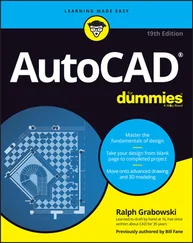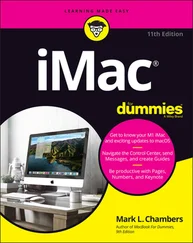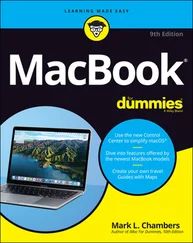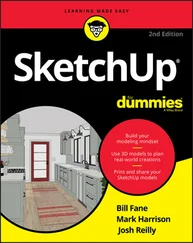 The first choice, a single-pixel dot, is hard to see on the screen, and the second choice, invisible (a stealth point?), is impossible to see. Avoid these choices if you want your point objects to show up on the screen and on plots. The single-pixel dot, which is the default display style, works well if you use point objects as object snap locations and don’t want the points obtrusive on plots.
The first choice, a single-pixel dot, is hard to see on the screen, and the second choice, invisible (a stealth point?), is impossible to see. Avoid these choices if you want your point objects to show up on the screen and on plots. The single-pixel dot, which is the default display style, works well if you use point objects as object snap locations and don’t want the points obtrusive on plots.
 The remaining settings in the Point Style dialog box control the size at which points appear on the screen at different zoom resolutions. The default settings often work fine, but if you’re not satisfied with them, click the Help button to find out how to change them.
The remaining settings in the Point Style dialog box control the size at which points appear on the screen at different zoom resolutions. The default settings often work fine, but if you’re not satisfied with them, click the Help button to find out how to change them.
After you specify the point style, placing points on-screen is easy; the following example shows you how.
This is an example of the command-line commands to create a point:
Command: POintEnter
Current point modes: PDMODE=0 PDSIZE=0.0000
Specify a point:
pick or type the coordinates of a location in the drawing

PDMODEand PDSIZEin the command prompt are system variables that correspond to the point display mode and display size options in the Point Style dialog box. If you want to know exactly how the system variables correspond to the dialog box choices, you have all the makings of a successful CAD nerd. Click the Help button in the Point Style dialog box to find out more (about the system variables — not about yourself).
 If you start the POint command from the Draw toolbar or the Draw→Point→Multiple Point menu, it will repeat automatically — that is, it will prompt you repeatedly to
If you start the POint command from the Draw toolbar or the Draw→Point→Multiple Point menu, it will repeat automatically — that is, it will prompt you repeatedly to Specify a point. When you’re finished drawing points, press Esc to finish the command for good. If the command doesn’t repeat automatically and you want to draw more points, press the Enter key to repeat the POint command and pick another location on the screen. Repeat as required: Enter, pick, Enter, pick, Enter pick… by now you should’ve gotten the point.
Chapter 6
Edit for Credit
In This Chapter
□ Using command-first editing
□ Selecting objects with maximum flexibility
□ Moving, copying, and stretching objects
□ Manipulating whole objects
□ Changing pieces of objects
□ Editing with grips
□ Editing object properties
Editing objects is the flip side of creating them, and in AutoCAD, you spend a lot of time editing — far more than drawing objects from scratch. That’s partly because the design and drafting process is by its nature iterative, and also because CAD programs make it easy to edit objects cleanly.
 When you edit objects in AutoCAD, you need to be just as concerned about specifying precise locations and distances as you are when you originally create the objects. Make sure that you’re familiar with the precision techniques described in Chapter 4 before you apply the editing techniques from this chapter to real drawings.
When you edit objects in AutoCAD, you need to be just as concerned about specifying precise locations and distances as you are when you originally create the objects. Make sure that you’re familiar with the precision techniques described in Chapter 4 before you apply the editing techniques from this chapter to real drawings.
AutoCAD offers two main styles of editing:
□ Command-first editing
□ Selection-first editing
Within the selection-first editing style, you have an additional choice of editing that uses actual, named commands and direct manipulation of objects without named commands. The following sections cover these editing styles.
Command-first editing
With command-first editing, you enter a command and then click the objects on which the command works. This style of editing may seem backwards to you at first unless you’re a longtime user of AutoCAD or a veteran of command-line operating systems (where you typically type the name of command and then the names of the files or other objects to which you want to apply the command). Command-first editing works well for power users who are in a hurry and who are willing to memorize most of the commands they need to do their work. It’s no surprise that command-first editing is the default style of editing in AutoCAD.
Selection-first editing
In selection-first editing , you perform the same steps — in the same order — as in most Windows applications: Select the object first, then choose the command.
Selection-first editing tends to be easier to master, which is why Windows and the Macintosh are easier for most people to use for a variety of tasks than DOS ever was. Selection-first editing makes AutoCAD more approachable for new and occasional users.
Direct manipulation is a refinement of selection-first editing in which you perform common editing operations by using the mouse to grab the selected object and perform an action on it, such as moving all or part of it to a different place in the drawing. No named command is involved; the act of moving the mouse and clicking the mouse buttons in certain ways causes the editing changes to happen. AutoCAD supports direct manipulation through a powerful but somewhat complicated technique called grip editing. Grips are the little square handles that appear on an object when you select it. You can use the grips to stretch, move, copy, rotate, or otherwise edit the object. These grip-editing techniques can make selection-first editing almost as powerful as command-first editing. The complications arise from the fact that you can do so many things with an object after you select it.
Choosing an editing style
This chapter emphasizes command-first editing. (I also discuss grip editing at the end of the chapter.) AutoCAD is fundamentally a command-first program. AutoCAD started out offering only command-first editing and later added selection-first methods; AutoCAD 2005 inherits this ancestral trait. I emphasize command-first editing for the following reasons:
□ It’s the default AutoCAD editing style.
□ It works consistently with all editing commands — some editing commands remain command-first only.
□ It provides added object selection flexibility, which is useful when you work on complicated, busy drawings.
After you know how to do command-first editing, you can simply reverse the order of many editing operations to do them selection-first style instead. But if you don’t get familiar with command-first editing in the beginning, you’ll be completely bewildered by some very useful AutoCAD commands that work only in the command-first style, such as TRim and EXtend. (Commands such as these ignore any already selected objects and prompt you to select objects.)
 Much of the information in this chapter assumes that you’re using the default AutoCAD selection settings. If object selection or grip editing works differently than I describe in this chapter, check the settings on the Option dialog box’s Selection tab. Five check box settings should be turned on (all other check box settings should be turned off):
Much of the information in this chapter assumes that you’re using the default AutoCAD selection settings. If object selection or grip editing works differently than I describe in this chapter, check the settings on the Option dialog box’s Selection tab. Five check box settings should be turned on (all other check box settings should be turned off):
Читать дальше
Конец ознакомительного отрывка
Купить книгу
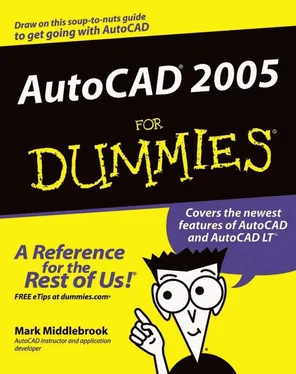
 The first choice, a single-pixel dot, is hard to see on the screen, and the second choice, invisible (a stealth point?), is impossible to see. Avoid these choices if you want your point objects to show up on the screen and on plots. The single-pixel dot, which is the default display style, works well if you use point objects as object snap locations and don’t want the points obtrusive on plots.
The first choice, a single-pixel dot, is hard to see on the screen, and the second choice, invisible (a stealth point?), is impossible to see. Avoid these choices if you want your point objects to show up on the screen and on plots. The single-pixel dot, which is the default display style, works well if you use point objects as object snap locations and don’t want the points obtrusive on plots. The remaining settings in the Point Style dialog box control the size at which points appear on the screen at different zoom resolutions. The default settings often work fine, but if you’re not satisfied with them, click the Help button to find out how to change them.
The remaining settings in the Point Style dialog box control the size at which points appear on the screen at different zoom resolutions. The default settings often work fine, but if you’re not satisfied with them, click the Help button to find out how to change them. If you start the POint command from the Draw toolbar or the Draw→Point→Multiple Point menu, it will repeat automatically — that is, it will prompt you repeatedly to
If you start the POint command from the Draw toolbar or the Draw→Point→Multiple Point menu, it will repeat automatically — that is, it will prompt you repeatedly to  When you edit objects in AutoCAD, you need to be just as concerned about specifying precise locations and distances as you are when you originally create the objects. Make sure that you’re familiar with the precision techniques described in Chapter 4 before you apply the editing techniques from this chapter to real drawings.
When you edit objects in AutoCAD, you need to be just as concerned about specifying precise locations and distances as you are when you originally create the objects. Make sure that you’re familiar with the precision techniques described in Chapter 4 before you apply the editing techniques from this chapter to real drawings.

